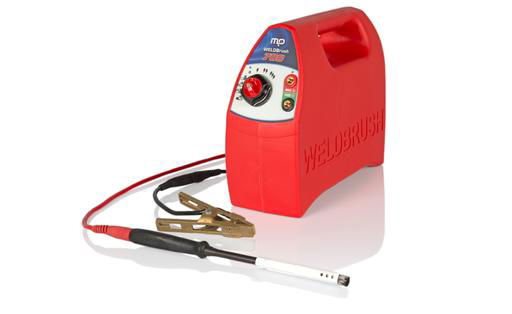Cutting metal with cutting wheels
A lot of manual cutting applications require a hand-held processor and cutting wheel. Cutting sheet metal, estimating a piece for manufacture, removing a weld to refabricate it, and cutting and indenting in pipeline work are only a couple of instances of what can be refined utilizing a processor and cutting wheel.

Resinoid-reinforced cutting wheels are a well-known decision to accomplish these kinds of cuts since they offer convenience and permit you to cut in various points and directions. The holding specialist, for this situation resinoid, holds the wheel together so it can cut successfully. The bond erodes as the grating grains wear and are removed so new sharp grains are uncovered.
By following a couple of best practices, you can broaden wheel life, advance wellbeing, and further develop usefulness and proficiency inside the interaction.
The Basics of Cutting Wheels
The principle contemplations in utilizing resinoid-reinforced wheels incorporate the cutting application, the instrument being utilized—like a right-point processor, pass-on processor, or hack saw—wanted cutting activity, the material being cut, and space. Fleece Wheels normally give a quick cutting activity, long life, and will quite often be financially savvy.
The two principal sorts of resinoid-fortified grating cutting wheels are Type 1, which is level, and Type 27, which have a raised center point. Type 1 wheels for the most part are utilized for straight-on cutting on electric or pneumatic right-point processors or bite the dust processors and slash saws, among different instruments. Type 27 wheels are required when there is some kind of obstruction and the wheel should be raised from the foundation of the processor, however close to home inclination likewise assumes a part in the choice. They are most ordinarily utilized with electric or pneumatic right-point processors.
Resinoid-reinforced rough-cutting wheels are accessible in different sizes and thicknesses. The most famous reach is 2 to 16 creeps in measurement, and normal thicknesses are from 0.045 in. to 1⁄8 in. More slender wheels eliminate less material during the cut.
A few sorts of wheels cut quicker than others. The rough material utilized in the wheel is one powerhouse on cut-rate and consumable life. Wheels come in a few grain choices, like aluminum oxide, silicon carbide, zirconia alumina, ceramic alumina, and mixes of these materials.
While not so sharp as different grains, aluminum oxide gives strength and great execution to cutting on steel. Silicon carbide, then again, is an extremely sharp grain yet not exactly as intense, making it reasonable for cutting nonferrous metals. Zirconia alumina is a self-honing, intense, solid grain that holds up well in the scope of requesting applications. Clay alumina likewise is intended to self-hone as it "breaks" at foreordained focuses to keep a reliable cut-rate and long life.
While choosing a resinoid-reinforced rough wheel, consider that items made with a combination of zirconia or artistic alumina with a harder bond normally cost all the more yet offer strength and longer consumable life.
Try to allude to the producer's suggestions, item depictions, and RPM evaluations to choose the appropriate wheel size and fortified rough material for your application. Matching the size and RPM rating of the instrument to the size and RPM rating of the wheel is basic for protected and viable use. Picking the instrument with the best amperage or measure of force while remaining inside the size and RPM necessities of the wheel will expand execution.
The sort of hardware and the device monitor that you use likewise are factors that assume a part in the kind of wheel that can be utilized for an application. A bigger breadth wheel works best in case you're cutting profound into metal or need to cut a piece with an enormous distance across, for instance, since it kills the need to shake the wheel this way and that during the cutting system. Search for a wheel with the breadth intended for the size and thickness of the material being cut.
Meager wheels, then again, will quite often eliminate less metal during the cut and have more limited life expectancies, however give a speedier cut. There are a few special cases for this as various adaptations of slight wheels are enduring longer, so make certain to do your examination before you settle on an ultimate conclusion to guarantee the wheel you select expand effectiveness.
See More: Flatbar Polishing Machines Wet
Claim to fame cutting wheels is likewise accessible that are intended for use with specific materials, like tempered steel and aluminum.
Appropriate Positioning and Other Tips
As well as focusing on assignments for RPM rating, size, and material, you ought to likewise follow these tips when utilizing resinoid-fortified grating cutting wheels.
• Utilize the cutting wheel at a 90-degree point, opposite to the work surface.
• Apply the appropriate measure of tension—not all that much, not very little—to permit the slicing wheel to accomplish the work. Continuously try not to push too unforgiving with the wheel, which can make the processor slow down or kickback or give you a significantly less effective cutting activity.
It likewise expands the possibility that you will slip or fail to keep a grip on the apparatus, which can cause harm or injury.
• Pick a processor with the most noteworthy force or amperage accessible for the application, as this will assist the wheel with accomplishing a greater amount of the work. For instance, rather than utilizing a 4.5-in. wheel on a 6-amp processor, utilize a 4.5-in. wheel on a 10-amp processor. The RPM rating continues as before, however, the instrument will give more force to cut into the metal.
